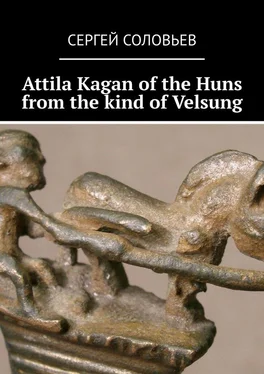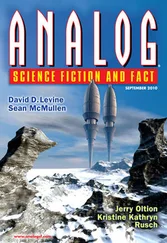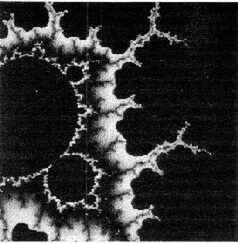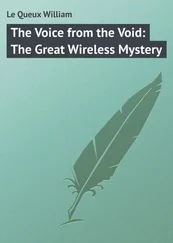Сергей Соловьев - Attila Kagan of the Huns from the kind of Velsung
Здесь есть возможность читать онлайн «Сергей Соловьев - Attila Kagan of the Huns from the kind of Velsung» — ознакомительный отрывок электронной книги совершенно бесплатно, а после прочтения отрывка купить полную версию. В некоторых случаях можно слушать аудио, скачать через торрент в формате fb2 и присутствует краткое содержание. ISBN: , Жанр: Прочая документальная литература, История, Детская образовательная литература, на английском языке. Описание произведения, (предисловие) а так же отзывы посетителей доступны на портале библиотеки ЛибКат.
- Название:Attila Kagan of the Huns from the kind of Velsung
- Автор:
- Жанр:
- Год:неизвестен
- ISBN:9785449804464
- Рейтинг книги:5 / 5. Голосов: 1
-
Избранное:Добавить в избранное
- Отзывы:
-
Ваша оценка:
- 100
- 1
- 2
- 3
- 4
- 5
Attila Kagan of the Huns from the kind of Velsung: краткое содержание, описание и аннотация
Предлагаем к чтению аннотацию, описание, краткое содержание или предисловие (зависит от того, что написал сам автор книги «Attila Kagan of the Huns from the kind of Velsung»). Если вы не нашли необходимую информацию о книге — напишите в комментариях, мы постараемся отыскать её.
Attila Kagan of the Huns from the kind of Velsung — читать онлайн ознакомительный отрывок
Ниже представлен текст книги, разбитый по страницам. Система сохранения места последней прочитанной страницы, позволяет с удобством читать онлайн бесплатно книгу «Attila Kagan of the Huns from the kind of Velsung», без необходимости каждый раз заново искать на чём Вы остановились. Поставьте закладку, и сможете в любой момент перейти на страницу, на которой закончили чтение.
Интервал:
Закладка:
Findings of burials with separated skulls are recorded throughout the distribution area of the Middle Don catacomb culture from the Seversky Donets to the Don-Volga interfluve (Khoper River).On the territory of the Middle Don, among more than 400 burials of the Middle Don catacomb culture, five burials with skeletons are known, in which the separation of the skull of the buried is reliably recorded.
All considered burials were accompanied by ocher, which was located both in separate burial places and completely covered the skeleton of the buried. In each burial, ocher, as it were, emphasizes the special ritual significance of the objects it accompanies. This type of “special burials” is characterized by a variety of accompanying equipment. The set of equipment in each burial is individual, but a common feature for all burials is its originality. Almost all decapitated burials were accompanied by animal bones. In addition, two fortunetelling bones are a particularly interesting find. According to some researchers, the “dice”, but rather the fortunetellers, that is, the buried was a representative of the priestly group. “Bones with signs” or dice, namely fortunetelling bones, originally had cult character, were the prerogative of a certain class associated with the performance of priestly functions. Among the cult objects is the flute, as well as the bone hairpin (Vlasovka 12/3). The dead already have artificial deformation of the skulls. According to A.T. Sinyuka, all burials where a burial ritual of burial was used, indicate the high social status of the deceased. Only prominent representatives of society and their immediate circle could claim burial places under the mound. But even from this series of burials, according to special signs, decapitated burials stand out. Researchers believe that it is possible to assert with sufficient confidence that decapitated burials are not specifics of a particular culture of the catacomb community, but most likely have a supercultural character, reflecting the complex social structure of tribes carrying catacomb traditions. Found the burial of a teenage girl. Stuffed with boulders. Weighing hundreds of kilograms, which speaks of considerable fear inspired by such a young creature. But faith in the “evil” deceased seems obvious and proven.
Srubnaya culture
The cultural-historical community is an ethnocultural association of the late Bronze Age (XVIII – XII centuries BC, according to other estimates – XVI – XII centuries BC. Some scholars, like S. Berestnev I. that the timber culture existed before IX BC, common in the steppe and forest-steppe bands of Eastern Europe between the Dnieper and the Urals, with individual monuments in Western Siberia and the North Caucasus, was originally identified as a culture in 1901—1903 by Russian archaeologist V. A. Gorodtsov, but in the 1970s N. Ya. Merpert and E.N. Chernykh drew attention to local differences within culture and introduced into scientific use the concept of “carcass cultural-historical community.” It is represented by the monuments of Pokrovskaya (XVIII – XV centuries BC) and Berezhnovsky-Mayevskaya (XVII – XII centuries BC) timber cultures, which are settlements, necropolises, workshops, mines, treasures and single finds. Dwellings – dugouts, half dugouts and land. Necropolises are represented by barrows and soil burial grounds. In the kurgan stratigraphy, the carcass burial sites occupy an upper position in relation to the graves of the pit and catacomb communities. The ceremony included the burial of the deceased in pits or wooden log cabins in a bent position, on the left side, of the hands in front of the face. Cases of cremation are also known. Funeral equipment is represented by jagged and canned vessels, less commonly metal products.Changes in climatic conditions, depletion of natural resources and overpopulation led to a sharp reduction in the population and cultural transformation of the tribes of the Srubnaya community. The pioneer of the carcass culture is V. A. Gorodtsov, who in the years 1901—1903, in the process of studying the barrow antiquities of the Seversky Donets, turned his attention to curved burials in wooden frames – log houses. In accordance with the design features of the burial structure, the culture he allocated was called the carcass. The concept of the origin of culture from the Poltavkin monuments of the Volga region and its migration at a late stage was developed in the mid-1950s by O. A. Krivtsova-Grakova. In the 1970s, N. Ya. Merpert and E.N. Chernykh turned their attention to local differences within the logging culture, but the identification of individual local variants or cultures, in their opinion, was problematic at that time. Later, in the course of scientific research, a number of researchers turned their attention to the anthropological, chronological and cultural differences of the steppe and forest-steppe monuments, which confirmed the hypothesis of local differences in the environment of the Srubnaya culture. N. Ya. Merpert and E.N. Chernykh put into scientific use the concept of “felling cultural-historical community”, which reflects its cultural heterogeneity. In the mid-1970s, N.K. Kachalova identified the Berezhnovsky type of monuments based on the materials of the Lower Volga, and I.F. materials of the Mayevsky burial ground (Dnepropetrovsk) – Mayevsky type of monument]. In the 1990s, N. M. Malov and O. V. Kuzmina, on the basis of materials from the Pokrovsky burial ground, single out a separate Pokrov culture. The common features of the funeral rite of the Berezhnovsky and Mayev types of monuments allowed V.V. Otroshchenko to combine both types into a separate Berezhnov-Mayev culture as part of the carcass cultural and historical community of the Late Bronze Age. Yu. M. Brovender singled out the Stepanovsky type of monuments in the environment of the Berezhnov-Mayev carcass culture. Thus, among the carcass cultural-historical community of the Late Bronze Age, the Pokrov and Berezhnov-Mayev carcass cultures and the Stepan type of monuments are distinguished, which reflects its cultural heterogeneity and formation features. The problem of the origin of the log house culture (later the log house cultural and historical community) was posed by V.A. Gorodtsov in 1907, almost immediately after the discovery of burial mounds in log cabins on Seversky Donets. The researcher formed the migration concept of origin, which was finalized in the mid-1950s by O. A. Krivtsova-Grakova. The researcher believed that the carcass culture was formed in the Volga region on the basis of the Poltava culture of the Middle Bronze Age. One of the variants of this hypothesis is the concept of the Volga-Ural cultural genesis of V. S. Bochkarev. Migration theory has not received absolute support in the scientific community. N. N. Cherednichenko spoke in favor of the autochthonous origin of the carcass culture. In his opinion, all local variants of the carcass culture are synchronous, and there was no single center of culture origin, and the formation of each variant should be explained based on the specifics of the local archaeological situation. V.V. Otroshchenko developed in the 1990s a concept for the development of a felling cultural and historical community from the Sintashta, Don-Volga Abashev, Babin cultures and Potapov type monuments of the Middle Volga region in the process of their ethnocultural interactions. In accordance with it, the researcher identified among the community of Pokrovsky and Berezhnovo-Mayevskaya log cabling, which, in his opinion, developed on a different basis. Pokrovskaya carcass culture develops in the forest-steppe interfluve of the Don and Volga due to the political and cultural influences of Sintashta culture bearers on the Late Abashev population, from where it spreads to other regions.
Protoberezhnovsky monuments are common in the Lower Volga region, where, according to the researcher, the Novokumak ethnic component that came from the east is superimposed on the Late Catacomb population.Later, the tribes of the Pokrovsky carcass culture advance on the Left Bank of the Seversky Donets, where they are fully assimilated by the carriers of the Babin culture. As a result of the assimilation of the Pokrov population by Babin tribes, the Berezhnovo-Mayev log-house culture is formed. Pokrovskaya carcass culture (XVIII – XV centuries BC) is widespread in the steppe and forest-steppe zone from the Seversky Donets to the Volga. Separate monuments are presented in the Urals. An eponymous monument is the Pokrovsky burial ground in the Saratov Volga region, which was investigated by P.S. Rykov in the 1920s near the city of Pokrovsk (now Engels). Highlighted in the early 1990s by N. M. Malov and O. V. Kuzmina as a cover culture. It was formed on the basis of the Don-Volga Abashev culture with the direct influence of the Sintashta and Potapov type monuments of the Middle Volga. Monuments are represented by settlements, burial grounds, treasures, mines, workshops and occasional finds. The settlements were located in close proximity to the rivers on small elevations. The most studied settlements are Usovo Lake, Mosolovka, Kapitanovo, Yanokhino, Scars and Prokazino.
Читать дальшеИнтервал:
Закладка:
Похожие книги на «Attila Kagan of the Huns from the kind of Velsung»
Представляем Вашему вниманию похожие книги на «Attila Kagan of the Huns from the kind of Velsung» списком для выбора. Мы отобрали схожую по названию и смыслу литературу в надежде предоставить читателям больше вариантов отыскать новые, интересные, ещё непрочитанные произведения.
Обсуждение, отзывы о книге «Attila Kagan of the Huns from the kind of Velsung» и просто собственные мнения читателей. Оставьте ваши комментарии, напишите, что Вы думаете о произведении, его смысле или главных героях. Укажите что конкретно понравилось, а что нет, и почему Вы так считаете.












